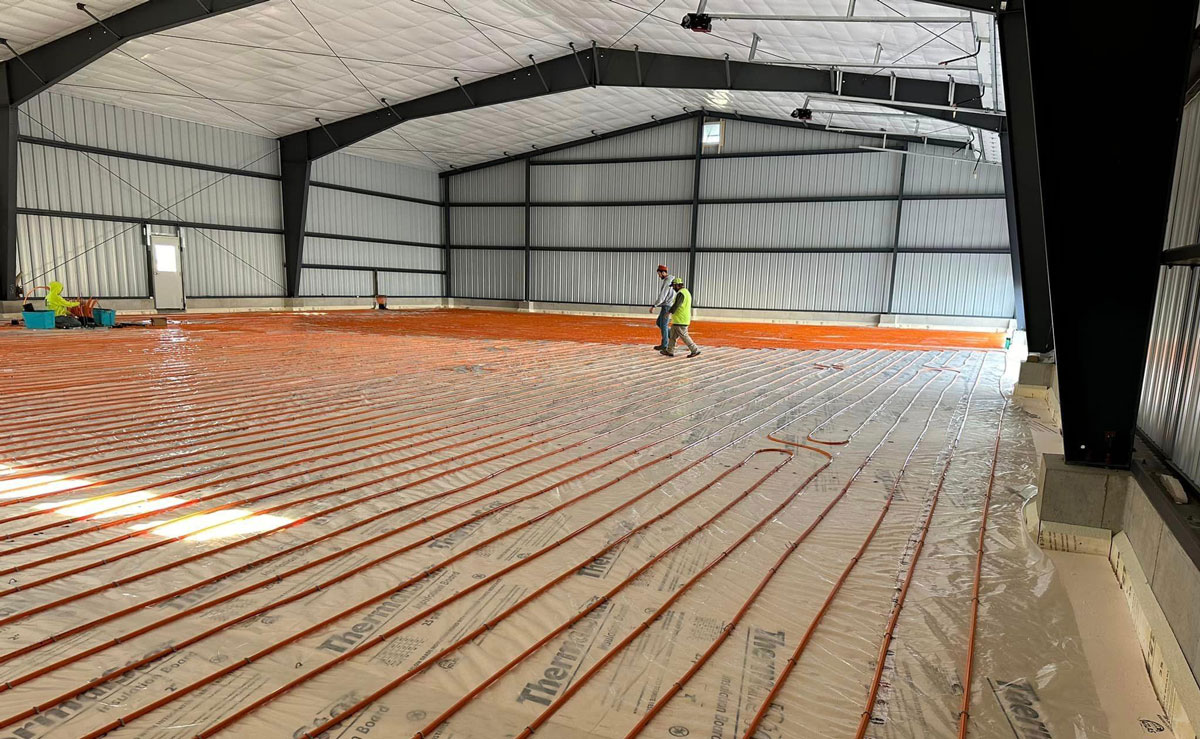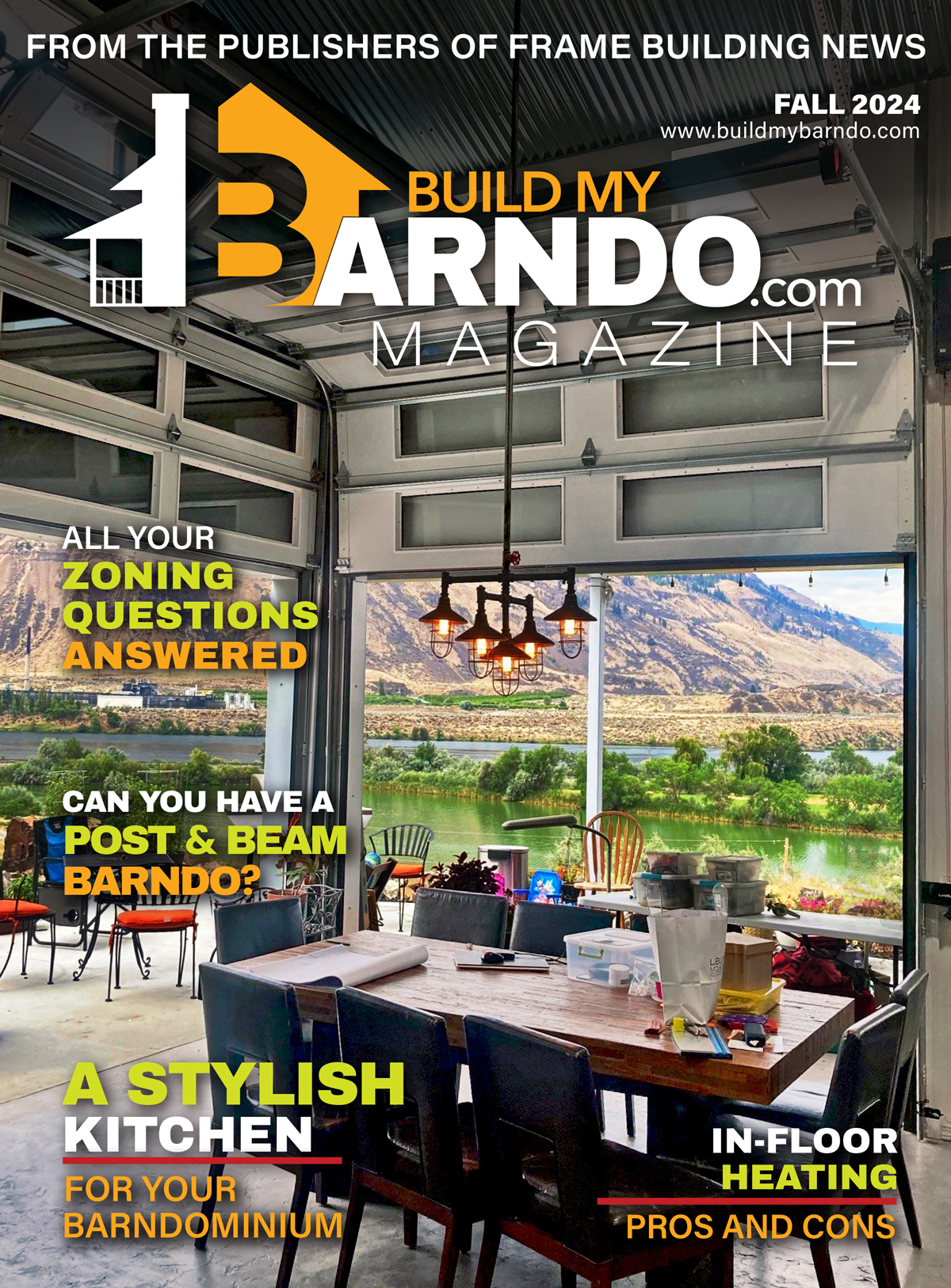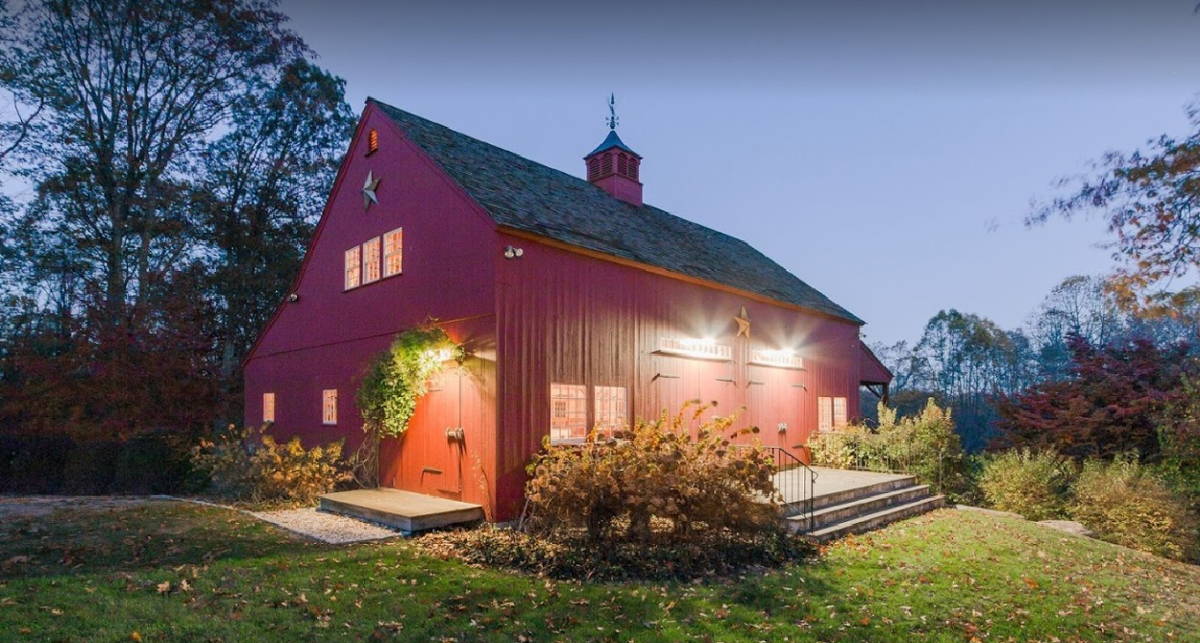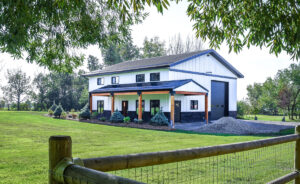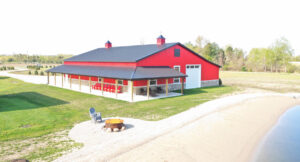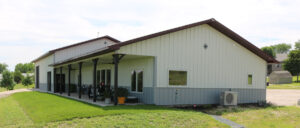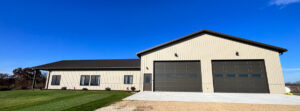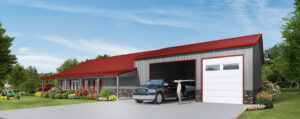What Barndo Owners Need to Know
Radiant floor heat can be an excellent choice for home heating, but like any other choice, there are pros and cons and it’s best to make an informed choice. Although radiant floor heat has been around for decades, it’s becoming more and more popular as the benefits spread by word of mouth.
Scott Patton, founder and owner of Indiana Warm Floors (indianawarmfloors.com), said potential customers hear about radiant heat and are intrigued. “Typically, it seems like somebody has heard about it through either a friend or a relative that had the system, so they look into it and they say, ‘Hey, my buddy or my brother-in-law has this. I wanted to see about doing it at my place.’ And all they know is that it’s a lot more comfortable and efficient than a conventional forced-air system.”
Superior Comfort
Radiant heat is considered more comfortable than forced air heat because, rather than just heating the air in a room, it heats the objects in the room directly, which creates a steadier, more consistent warmth. Plus, it heats joints and bodily fluids directly, promoting mobility.
“The comfort is the thing that’s kind of hard to convey,” Patton said, “but once you’ve walked into a house and all the floors are warm, people just look at each other and say, ‘Oh my gosh, the floor is so amazing, why wouldn’t everybody build a house with floor heat?’
Healthier Heat
Radiant heat is quiet and healthier because it doesn’t stir up dry dusty air and allergens. “With a regular furnace,” Patton said, “you’ve got a blower kicking on and off all the time and making air noise, blowing around dry, dusty air, where radiant floor heat has been deemed to be the healthiest heating system because you don’t have dry, dusty air getting blown around the house.”
Radiant heat is also better for humidity levels. “The humidity stays at a really good level because you don’t have that air getting blown around that’s drying out the air,” Patton said. “So, there’s really no need for a humidifier in the home. When the furnace heats up that air, the air expands, and it drives away the moisture. I continually hear about people with a bloody nose or dry nose or whatever, who have a hot air furnace, but with the radiant heat you maintain the 30 to 40% humidity without buying a humidifier.”
Zoned Control
Patton pointed out that customers appreciate that, unlike forced air heat, radiant heat allows them to tailor heat to different areas of a structure. “There’s typically three to five zones in a residential home,” he said. “The garage might be at 50 degrees, the basement at 65, the main level at 68, the bathroom at 75. The bedrooms — especially the master bedroom — are often in a separate zone, so people can turn the heat down or off for cool sleeping. So, you can get the comfort and the control you want in each area, and that’s what people really like.”
Lower Operating Cost, Especially for Larger Spaces
One of the biggest advantages of hydronic radiant heat is that it is cheaper to run than forced air heat. “Typically for residential you have about a 25% savings for operating a radiant heating system, versus forced air heating,” Patton said. “ If you think about these vaulted ceilings, if you use a hot air furnace, the hot air gets lightweight like helium, so it’s 90 degrees at the ceiling and the floor is still cold, and your feet are cold, and the heat never shuts off.
“With radiant heat, we put the heat in the floor, and it stays right there. The air doesn’t get hot and go to the ceiling. So, you’re standing on the BTUs that you’re paying for. And I think that’s probably why the majority of the heating systems in Europe are radiant heat because their utility costs over there are three to five times more than they are here.”
Because hydronic radiant heat efficiently heats large spaces, it’s ideal for larger residences and commercial spaces. “A boiler system that will heat a 1,200 square-foot home is the exact same system that can heat all the way up to roughly 13,000 square feet. So, whether your home is 1,000 square feet or 13,000 square feet, that same boiler module that’s going to be on the wall with the plumbing is going to be roughly the same. So that’s the capacity of that unit. And most of the time we use a combi boiler that also generates hot water for showers, so it’s got a dual function. The homeowner likes to hear that because they don’t have to have a separate big, bulky hot water heater or even another tankless heater on the wall. It’s all in one central unit.”
This means that owners can heat their garage, too, something that’s generally not feasible with forced air heating. “Typically, the boiler in the whole system can do it with or without the garage. The only additional expense at that point is the extra cost of the PEX and insulation for the garage. You already have the same investment in your boiler so, incrementally, it’s a very nice welcome option that people love,” Patton said.
“With that, even in cold weather you can use the garage to wax the car or use it as a bonus room for the holidays. The kids can ride bikes out there, but they can just keep it a set at 50 degrees if they want, just to melt the snow and ice off and keep the garage nice,” he said.
This explains why radiant heat is so popular in larger homes and combo shop/homes. “Barndominiums have been a very strong segment of our business for the last five years,” Patton said. “We must have a dozen of them going right now. People are building 2,000 or 3,000 square-foot living areas in a 4,000 or 5,000 square-foot ‘barn’ and call it a barndominimum. People are buying property out in the sticks and putting up their “barn” and they’ve got room for their toys. The husband is asking his wife to move into a barn, and she’s saying not without warm floors, so it’s a win-win.”
Fast Installation
While installing the pipes, valves, controls, and boiler for hydronic radiant heat looks complicated like a big job, but it’s actually a pretty fast job. “A lot of people are surprised about how quickly our company does the installs,” Patton said. “Typically, all the pipe is installed in one day and then the boiler is installed in another day. So it’s really just a two-day process.”
The Downside
Since radiant floor heating systems don’t use ductwork, a separate system may need to be added for cooling, which may mean a central heating/cooling air system needs to be installed. “Because of that,” Patton explained, “there is some redundancy because we are providing all the heat in the floor. But then we still need a duct system, which a lot of times, the blower for the duct system is the furnace. But it can also blow out warm air, which is desirable in spring and the fall, when you just want to add a little heat to the house without actually turning the floors on because it might be a mild day when you have the windows open in the afternoon. But you do have that expense of the furnace and the ductwork on top of the radiant heat, so that’s where the extra cost comes in. Many people are willing to pay for it because they want the comfort and efficiency.”
Adding a central air system isn’t the only option, however. “We actually offer products like an air-to-water heat pump that can provide heating and cooling to both the radiant heat and the air handler for the air conditioning,” Patton said. “So, there are different options for every situation out there. It doesn’t always have to be a gas-fired boiler or an electric boiler.”
The extra initial cost of the radiant heat installation is made up over the long term by the lower operating cost. “The energy savings will pay for the extra expense over a period of time, and people don’t really care about that so much,” Patton said. “They just want to know it does pay for itself eventually, and they really want the comfort and the control.”
Conclusion
“I’ve been installing radiant heat since 1979, when I started the company,” Patton said. “Each year, it becomes more and more popular. People experience it and they just can’t believe every house doesn’t have it. They like the efficiency, the control, and the quietness, and there is just the overall comfort, and a lot of people are keying into the health.”
When customers have radiant heat installed, they’re following new trends for the interior, and they tend not to do traditional flooring. “They’re building new homes, and they’re not putting in any carpet,” Patton explained. “They’re just doing stained or painted concrete floors.” Most people who don’t know about radiant floor heat think you have to have plush carpet to have warm floors, but that’s not true with radiant heat. Not having carpet makes it easier to have clean floors because bare floors are easier to clean. “People just love the cleanliness and the health aspect.”
Whether customers decide to invest in radiant heating or not, they should choose at the very beginning of the planning because some options are one-shot only, as it may be prohibitively expensive or impossible to change after construction is complete.
“I typically get all positive feedback on the radiant heat,” Patton said, “but sometimes the customer will skip doing their garage, or they’ll limit themselves by only doing two zones to try to save a little bit of money on the front end, and they always — I mean it’s a guarantee — they always come back and say ‘I should have just done the four zones or I should have done the garage, too, because I mean this is unreal comfort.’
Advantages of Radiant Floor Heat
• Radiant floor heat works very well in rooms with high ceilings and with doors or windows. Radiant heat doesn’t heat air, but rather the objects in a room. When heat in the space is held by air rather than the objects in a room, the heat can rapidly flow out of an open space with the air flow.
• Radiant floor heat creates even heat throughout a space, including vertically from floor to ceiling. This avoids hot and cold spots, allowing better comfort and control of heating, and perhaps a lower thermostat setting.
• Unlike forced air, radiant floor heat is silent and no heat is lost in air ducts.
• Radiant floor heat makes it easier to create controlled heat zones, which means less wasted heat. The thermostat can be used at a lower setting and provides more comfort.
• With installation of radiant floor heat, concrete will retain heat for a long time after heat is turned off.
• Radiant floor heat works well under ceramic and porcelain tile, stone, and marble because they conduct heat well and don’t expand or contract, so they’re resistant to cracking. These non-porous materials are often used in bathrooms and kitchens rather than carpet because they’re waterproof but are cold to the feet if not heated.
• For people with allergies, radiant floor heat is better than forced air heat because there’s no moving air to stir up dust and other allergens. Also, hard surfaces don’t retain dust.
• Radiant floor heat improves comfort and mobility because it heats joints and bodily fluid directly.
• With radiant floor heat, no floor or wall space is taken up as it is with radiators, air vents, a fireplace, or wood stove. This also allows more flexibility in arranging furniture, since there’s nothing to be blocked.
• It’s a good option for additions where it’s not feasible to connect to the current heating system.
Disadvantages of Radiant Floor Heat
• Radiant floor heat is slower to heat spaces.
• Heavy carpet doesn’t work well with radiant floor heat because it’s not a good heat conductor. It acts like an insulator blocking heat distribution, although this can be overcome with system design.
• With radiant floor heat, caution needs to be used when installing a nailed-down floor, such as a hardwood floor because nails that are too long or misplaced could damage wires used for electrical radiant floor heat or puncture water tubes used in hydronic radiant floor heat.
• Radiant floor heat may have a higher upfront installation cost than a furnace.
• Hydronic radiant floor heat requires pumps, valves, and other parts that require periodic maintenance.
• With radiant floor heat, any needed repairs may be expensive because the systems are located within the floor and are not easily accessible.
• A conventional central air conditioning system relies on ductwork, which isn’t used for radiant floor heating, so a separate cooling system might need to be used when relying on radiant floor heat.
• In a room with a large window or many windows, passive solar heat might overheat a room with radiant floor heat. The fluctuating nature of solar heat may make it hard to regulate temperature in a room with radiant floor heat.
Other Resources

